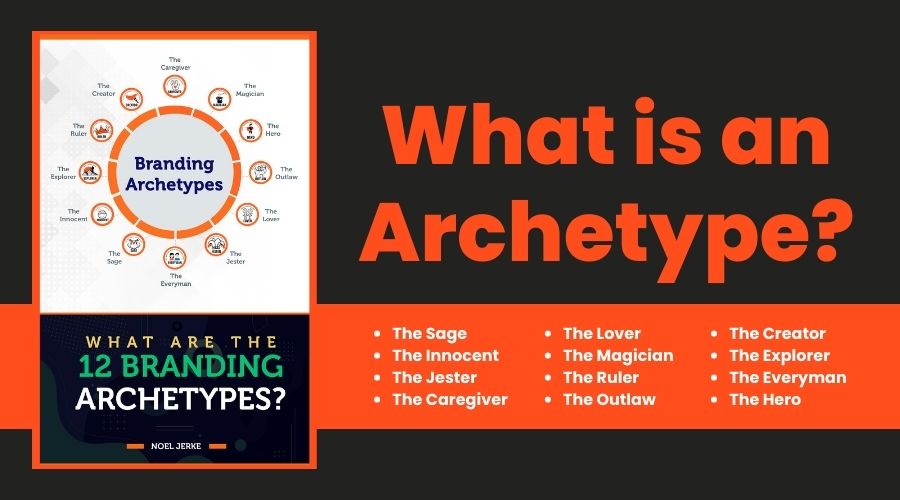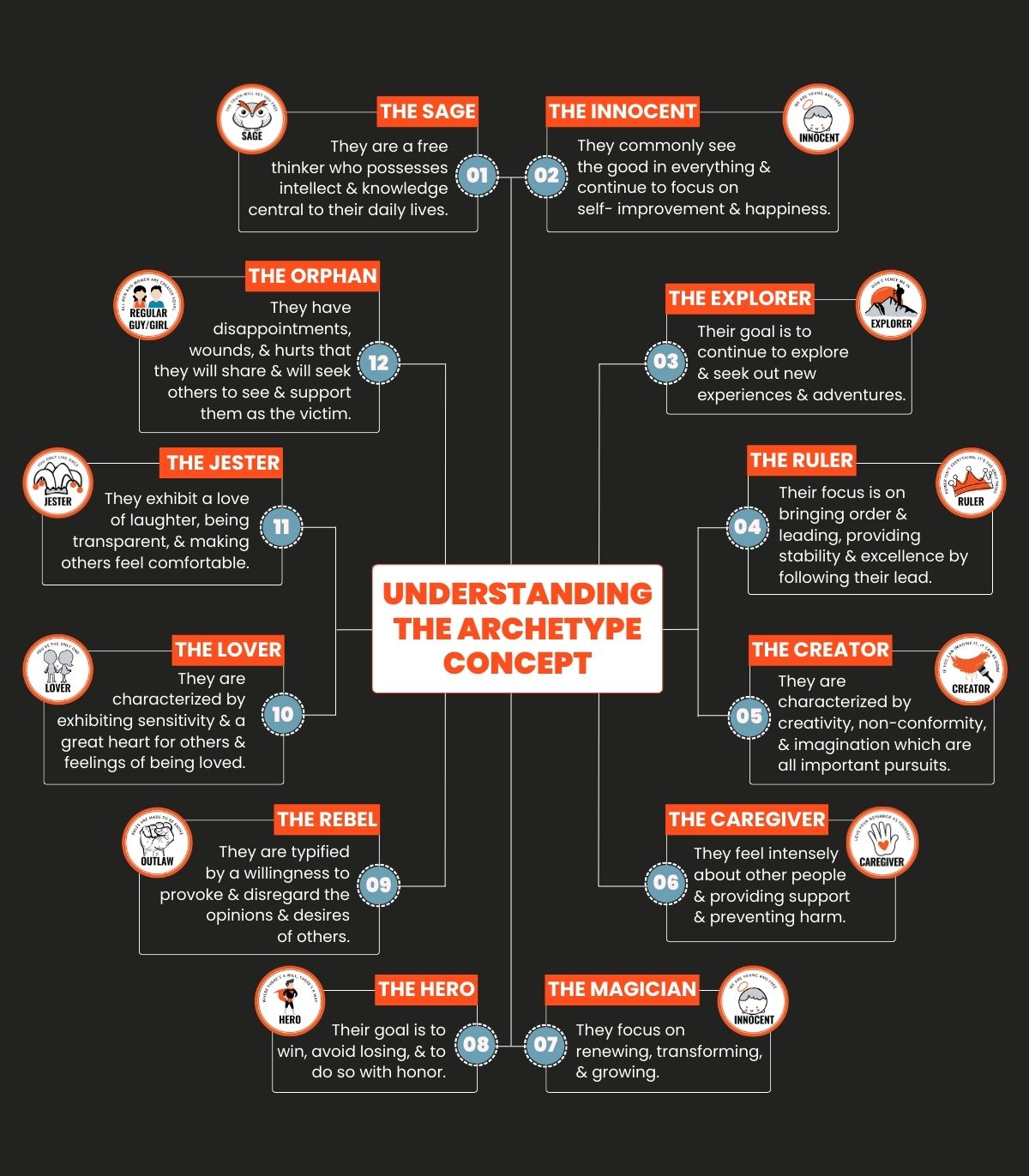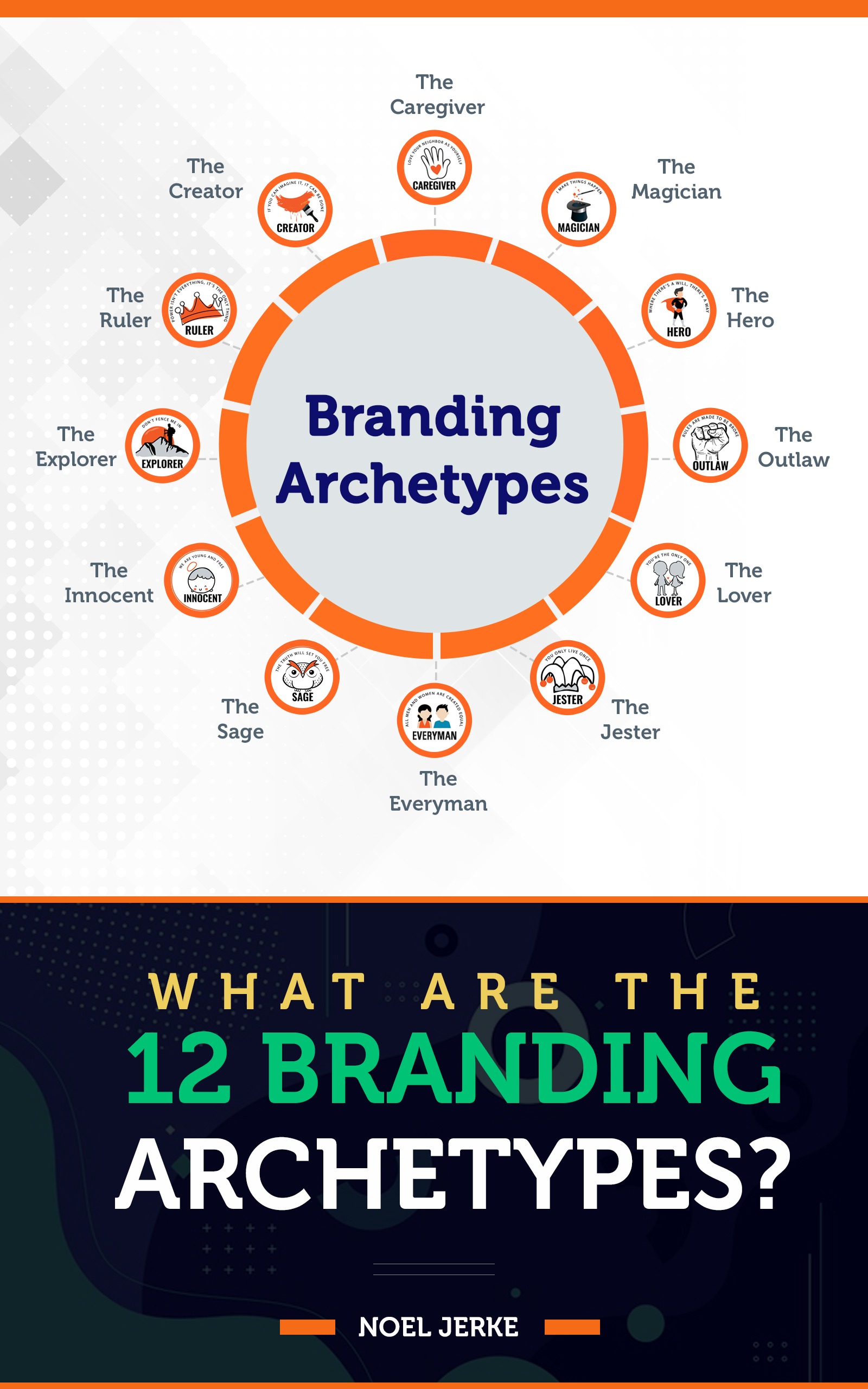Table of Contents
In our modern times with TV advertising, Internet advertising, print, and traditional signage, there is fierce competition for consumers’ attention.
Developing a brand is vital for a business to stand out and attract customers.
Focusing on a specific brand archetype helps your branding efforts create a strong bond with consumers and other stakeholders such as employees, citizens, and suppliers. An archetype makes a brand easily recognized for its traits and characteristics that consumers can identify in themselves. Thus, it builds a connection and affinity between the brand and the consumer.
Who is Carl Jung?
The Swiss psychiatrist Carl Gustave Jung was born on July 26, 1875. He was well-known for his research in Psychology. He founded analytical psychology, which is the study of the individual unconscious and its relationship to the collective unconscious.
As part of his work, Jung also identified psychological archetypes during his study of cultural mythologies. Jung was greatly influenced by many of Sigmund Freud’s theories. During his research, he found that irrespective of a the culture of the origin of a legend, all legends have certain familiar characters with a universalistic acceptance and appeal.[1] According to him, archetypes are usually traceable back to myths, fables, symbols, rituals, and human instincts and carry a significant meaning. It serves as a model image of a person or role.
Understanding the Archetype Concept
The term “archetype” occurs as early as Philo Judaeus, referring to the Imago Dei (God-Image) in man. An archetype is a primordial image, character, or pattern of circumstances that recurs throughout literature and is consistently considered universal.[2] The central concepts of religion, philosophy, ethics, and science are no exception to how powerful ideas lead back to archetypes. Jung defined 12 common archetypes at the individual level, like the 12 branding archetypes for organizations.
The Sage: They are a free thinker who possesses intellect and knowledge central to their daily lives.
The Innocent: They commonly see the good in everything and continue to focus on self-improvement and happiness.
The Explorer: Their goal is to continue to explore and seek out new experiences and adventures.
The Ruler: Their focus is on bringing order and leading, providing stability and excellence by following their lead.
The Creator: They are characterized by creativity, non-conformity, and imagination which are all important pursuits.
The Caregiver: They feel intensely about other people and providing support and preventing harm.
The Magician: They focus on renewing, transforming, and growing.
The Hero: Their goal is to win, avoid losing, and to do so with honor.
The Rebel: They are typified by a willingness to provoke and disregard the opinions and desires of others.
The Lover: They are characterized by exhibiting sensitivity and a great heart for others and feelings of being loved.
The Jester: They exhibit a love of laughter, being transparent, and making others feel comfortable.
The Orphan: They have disappointments, wounds, and hurts that they will share and will seek others to see and support them as the victim.
For a business or organization, brand storytelling aims to tap the consumer’s unconscious desire and make their brand relatable, memorable, and iconic. The twelve archetype models of Carl Jung were later adapted to create an emotional branding and marketing strategy. There are twelve types of brand archetypes which we will be exploring: The innocent, Everyman, Hero, Outlaw, Explorer, Creator, Ruler, Magician, Lover, Caregiver, Jester, and Sage.
Purpose of the Brand Archetype
Humans desire to feel empowered and motivated; that is why archetypes aim to tap into universal human desires and relatable personas. By establishing an archetype persona, a business can focus its marketing goals.
Archetypes support differentiation by inspiring marketing managers and companies to understand their brand’s roots and mission, and vision. The people, places, and ideas that influenced the brand’s beginning will make the brand stand out. It is vital to remember the characteristics which make a brand unique and different from competitors.
An archetype can enhance the experience and relationship with customers. For instance, the Hero archetype possesses traits of strength and support. If a consumer is looking to hire a security company, for example, one branded as a Hero archetype might stand out in the consumer’s mind as the best option for them. On the other hand, a security company branded as the Caregiver might appeal to consumers who have more of a desire to be “taken care of.”
Archetypes tap into consumer desires. It speaks to your consumer’s specific needs and longings, such as creativity, innovation, or motivation. As archetypes forge a connection to these needs and wants, it becomes an avenue for companies or organizations to determine their branding and marketing goals, which will help them strengthen an authentic relationship with their consumers.
These twelve archetypes are all different and specific ones will appeal to a particular individual. Creating an archetype branding strategy allows businesses to differentiate their brand and showcase authentic personalities. The goal is for consumers to feel a strong affinity to the organization and prefer them over the competition.
In marketing, a brand archetype is a genre you assign to your brand based upon symbolism. The idea behind using brand archetypes is to anchor your brand against something iconic—something already embedded within the conscious and subconscious of humanity. In the minds of both the brand owner and the public, aligning with a brand archetype makes the brand easier to identify.
[1] (Sadaf, S and Kumari, S.) September 2011, Archetyping the Brand: Strategy to Connect. Retrieved from: https://www.researchgate.net/profile/Shyama_Kumari3/publication/256023093_Archetyping_the_Brand_Strategy_to_Connect/links/5e06b47d4585159aa49f8489/Archetyping-the-Brand-Strategy-to-Connect.pdf
[2] Jung, C.G., (1972). Four Archetypes: Mother, Rebirth, Spirit, Trickster.



